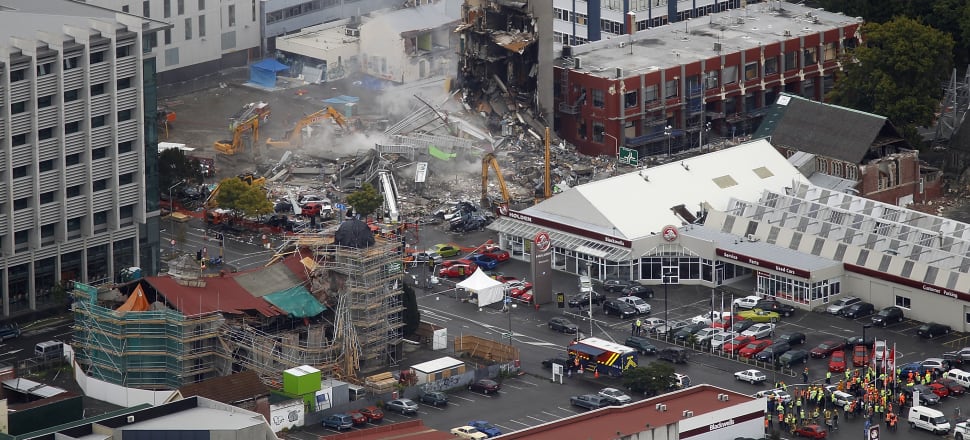
Why didn’t we learn from the Hawkes Bay earthquake, where the first fatalities died from falling masonry, a deadly feature of the tragic events on February 22, 2011?
Opinion: There was a word that really irritated me after the February 22, 2011 earthquake in Ōtautahi Christchurch, and that was ‘unprecedented’. I soon discovered it is a word that central and local government use to cover either for their lack of preparedness or for their unwillingness to even consider, let alone learn from, what has gone before.
An ‘unprecedented’ event can also justify a course of action that is unsupported by evidence or by international best practice.
I like to quote Douglas Adams, who once said: “Human beings, who are almost unique in having the ability to learn from the experience of others, are also remarkable for their apparent disinclination to do so.” How right he was.
READ MORE:
* Now is the time to re-think EQC
* The Auckland floods are a sign of things to come
* EQC isn’t Canterbury’s problem, it’s everyone’s
I recall all the people and organisations who offered us help as we recovered from the earthquakes, and how many of them were ignored or turned away. There was no attempt to look at anything they could offer. In fact, a year after the February 22 earthquake, the minister in charge of the recovery said, “I think we’re actually re-writing international best practice down here on a day-by-day basis”.
Really? Good grief! But that’s what happens when you say that the event itself is unprecedented often enough.
So, let’s look at the word. The dictionary defines unprecedented as referring to something that has never existed or happened before.
So, was the February 22, 2011, earthquake unprecedented?
Why did we not learn that lesson, and ensure unreinforced masonry was tied back or cordoned sufficiently from footpaths and roadways after the warning that the September earthquake gave us nearly six months before?
No, there have been many earthquakes of a similar magnitude around the world, but even within New Zealand, such as the 7.8 magnitude Hawkes Bay earthquake on February 3, 1931, in which 256 people died and thousands were injured.
I have often wondered why we didn’t learn all the lessons of the Hawkes Bay earthquake. It was there that the first fatalities died from falling masonry, a deadly feature of the tragic events on February 22, 2011.
So much good came of the Hawkes Bay earthquake, including ultimately the establishment of the Earthquake Commission, but why did we not learn that lesson, and ensure unreinforced masonry was tied back or cordoned sufficiently from footpaths and roadways after the warning that the September earthquake gave us nearly six months before?
This is something the city has apologised for, but we can’t bring back those who died or were injured. We can only ensure we do everything to minimise the risk of it happening again.
So why is this something I am writing about today? It’s about learning from the experience of others.
I recently heard a Wellington City Councillor warning people about the costs of the government’s earthquake-strengthening rules adopted in 2016, and urging the Government to revisit them and how they are paid for.
Admittedly, this was in relation to apartment buildings. But it led me to reflect on the earthquake-strengthening rules particularly in relation to unreinforced masonry buildings, which are a feature of so many parts of Wellington.
These buildings may have been weakened in the Hurunui Kaikōura earthquake and yet their priority did not change. Many will already be priority buildings and they will still have four years to go before they have to be strengthened. The building can of course still be used and occupied in the meantime.
The media coverage has focused on the large-scale projects such as the Wellington Town Hall, but there are places that pose significant risk to people on a daily basis.
Wandering along Riddiford Street in Newtown recently, I noticed the Earthquake Prone Building stickers on window after window, creating for me a sickening sense of premonition. Will people die an avoidable death there because we could not front up to the reality of the risk people are being called on to face as they go to work each day or call into a shop along the way? Will it be kids on the way to or from school? Someone waiting for a bus?
I remember how pleased I was when the government included these unreinforced masonry buildings in the priority one category, and yet when I visit Wellington today, I can’t see the sense of urgency commensurate with the lesson we should have learned by now.
It wasn’t so obvious when it was just a clause in the Building Act. It is when you read the stickers telling you every shop along the block you are walking is an earthquake-prone building. That’s when it hits home.
I think it is time to have a serious conversation about speeding up the strengthening work that will be needed to protect against the loss of life and injury that will occur in areas of high risk, and if it comes down to the cost, then we need a discussion about whether these buildings can continue to be used as they are. A sticker is no protection against what has happened before.
And no one will ever be able to say that a Wellington earthquake was unprecedented. We know the risks, and tragically we know the consequences.







